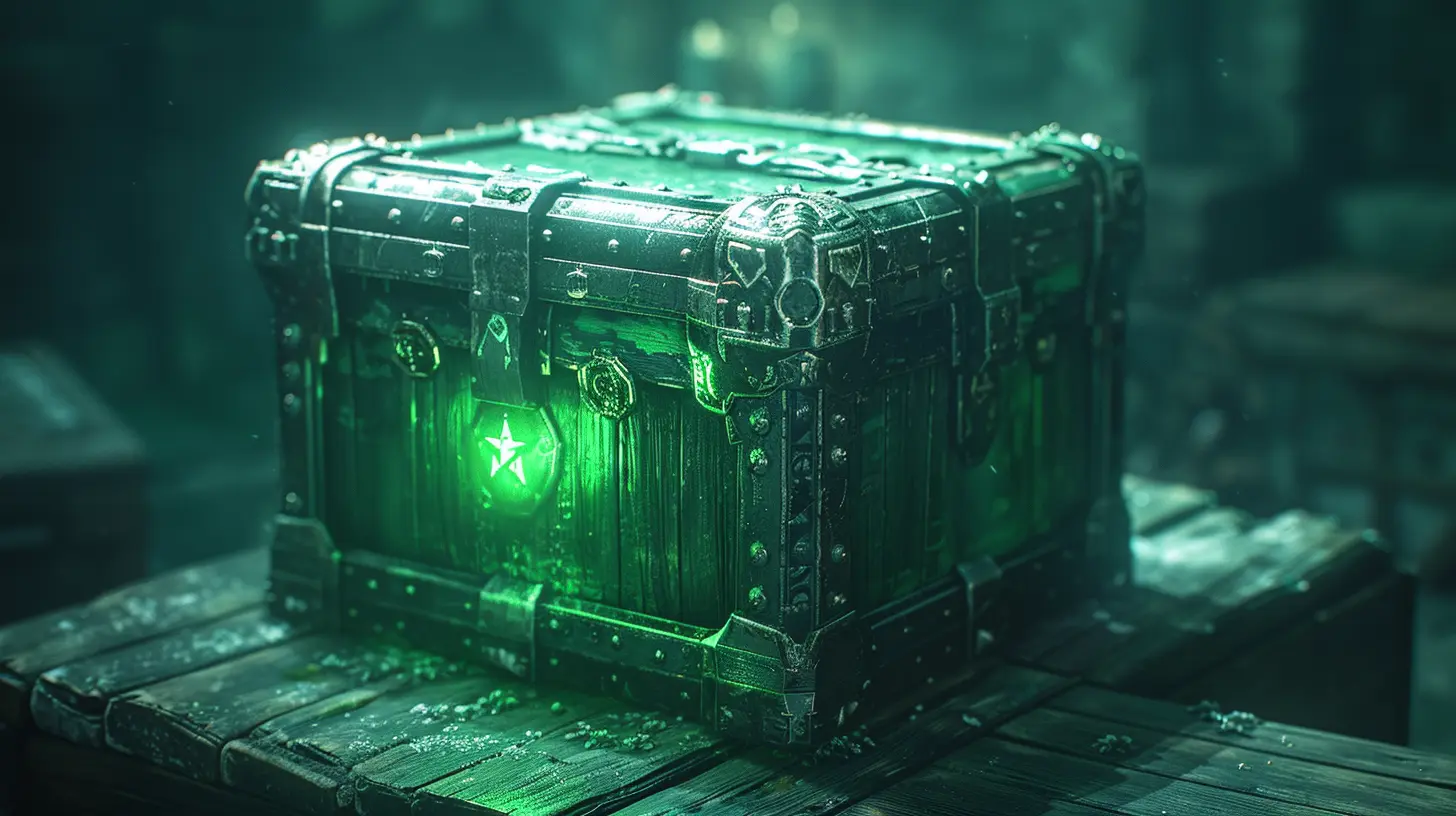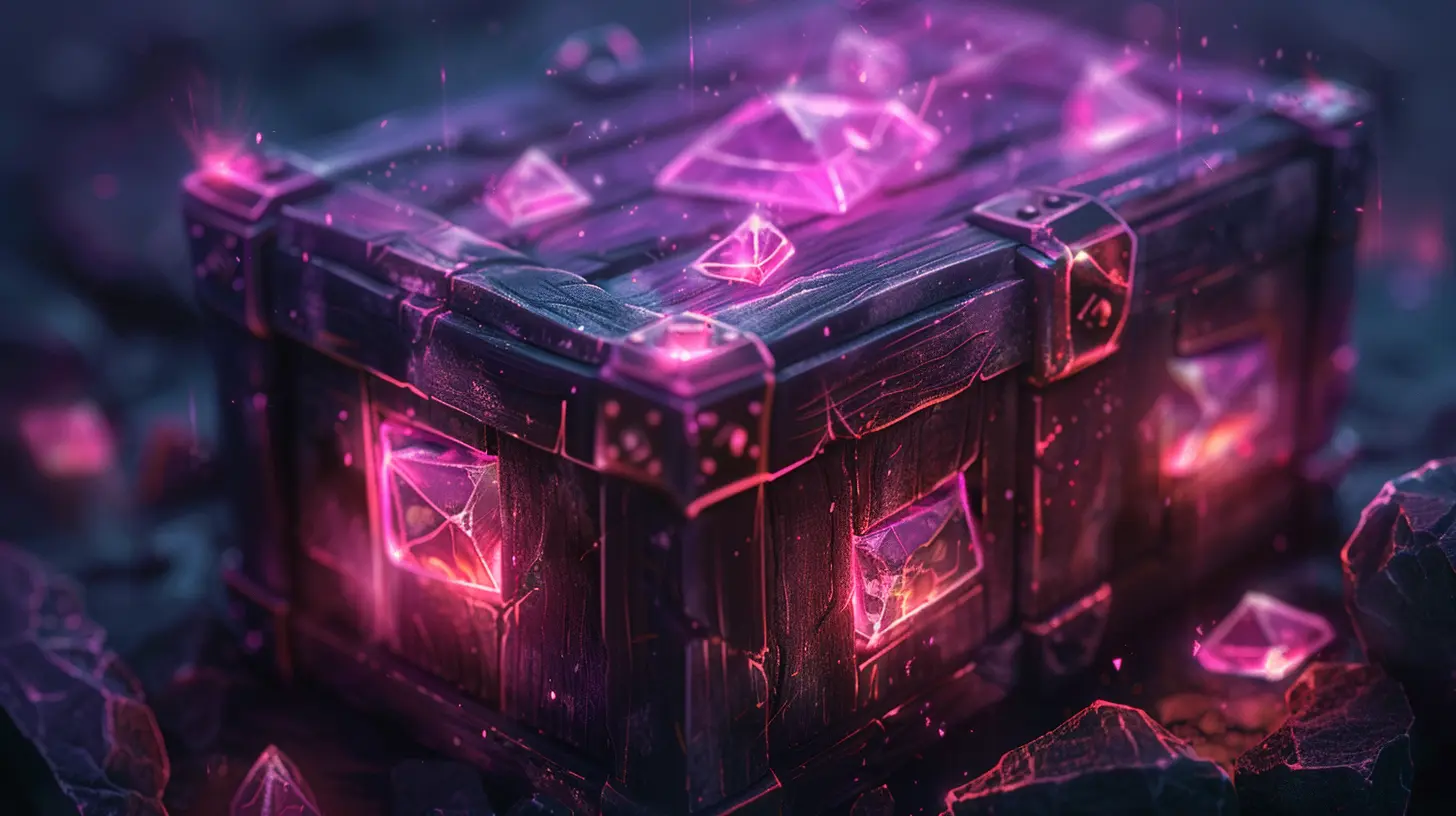The Evolution of Microtransactions and Loot Boxes
9 May 2025
Let’s face it: gaming has changed a lot over the years. From the days of simple cartridges and one-time purchases to today’s sprawling digital worlds, the industry has come a long way. But one thing that’s shaken up the gaming world like nothing else? Microtransactions and loot boxes. Love them or hate them, this duo has become a cornerstone of modern gaming. Whether you're an occasional gamer or a hardcore fan, you've probably encountered them in some form.
So, how did we get here? How did these features go from barely existing to being a heated topic at dinner tables, online forums, and even government regulations? Sit back, grab your favorite snack (no microtransaction required), and let’s dive into the fascinating—and sometimes controversial—evolution of microtransactions and loot boxes.
What Are Microtransactions and Loot Boxes?
Alright, before we get too deep into the history, let’s break it down for anyone who’s a bit fuzzy on the terms.- Microtransactions: These are small, optional purchases you can make within a game. Think cosmetics like skins, character outfits, or upgrades that give your character an edge. They’re usually priced low, but those $2 purchases can add up fast, right?
- Loot Boxes: Imagine opening a present, but you don’t know what’s inside until you unbox it. That’s essentially what a loot box is in gaming. You pay for a randomized item—sometimes it’s something amazing, sometimes it’s... eh, not so much.
Got it? Cool! Now, let’s rewind and figure out where all this started.
The Early Days of Gaming: A Simpler Time
Not long ago, games were straightforward. You went to the store, bought a physical copy, and that was it. If you were lucky, there might be cheat codes hidden in a magazine, but you weren’t dishing out extra cash once the game was in your hands.But as games grew in complexity, developers started looking for ways to keep making money even after you bought the game. After all, creating these massive, immersive worlds isn’t cheap. Microtransactions were born out of necessity—sort of.
Early Experiments: The Birth of Microtransactions (2006-2010)
The idea of microtransactions didn’t just pop out of nowhere. The seeds were planted in the mid-2000s, mostly with free-to-play online games. You’d often see these in mobile or PC games where you could play for free but buy little perks. Remember when Facebook games like Farmville and Mafia Wars took over people’s lives? Yup. Those games relied heavily on microtransactions, tempting players with speed boosts or special items.Then came console gaming. Microsoft’s Xbox 360 introduced the Xbox Marketplace around 2006, which allowed players to buy things like character skins or extra content. For better or worse, this model proved to be profitable. However, players weren’t quite ready for what was coming next.
DLCs vs. Microtransactions: The Shift
Before microtransactions fully took over, downloadable content (DLC) paved the way. Developers started offering expansion packs to give games more life after launch. These were big chunks of content, like a whole new storyline or extra levels. People generally accepted DLC at first—it felt worth it.But microtransactions? Those were smaller, more frequent, and not always tied to meaningful gameplay. Things started getting rocky when games charged for things that some players felt should’ve been free. You’d pay $60 for a game and still feel like you were missing out unless you coughed up extra cash.
Enter Loot Boxes: The Turning Point (2010-2017)
If microtransactions were the starter course, loot boxes were the main event. The concept of loot boxes became mainstream thanks to games like Team Fortress 2 (which went free-to-play in 2011) and Overwatch (released in 2016). For a small price, players could buy a loot box and open it to get a random item.Why were they so popular? Well, they’re kind of like gambling. Opening a loot box gives you that burst of excitement—like scratching a lottery ticket. And game developers knew how to capitalize on that rush. But here’s the catch: you don’t always get what you want. Let’s be honest, how many times have you opened a box hoping for that rare skin and got something absolutely useless instead?
Controversy Strikes: The Loot Box Backlash
By the mid-2010s, loot boxes were everywhere. Big games like FIFA Ultimate Team, CS:GO, and Star Wars: Battlefront II built monetization systems around them. But not everyone was thrilled.Players started pushing back, arguing that loot boxes were a form of gambling. Think about it: you’re spending real money on something random, hoping for a jackpot. If it walks like a duck and quacks like a duck… you get the idea.
Then came the headlines. Stories emerged about kids racking up thousands of dollars on their parents’ credit cards. Yikes. Some governments stepped in, too. Belgium and the Netherlands outright banned loot boxes, claiming they violated gambling laws.
The Industry Responds: New Trends in Monetization
Faced with backlash, some developers began rethinking their strategy. Games like Fortnite shook things up with the introduction of the Battle Pass. This system lets you pay a flat fee for a progression-based reward system, which is a lot less random than loot boxes. Players embraced this shift—it felt more transparent and rewarding.Meanwhile, the industry as a whole has been walking a fine line. Loot boxes haven’t disappeared, but many companies are toning them down or offering more ways to earn them without paying real money. It’s a tug-of-war between making games profitable and keeping players happy.
Are Microtransactions Here to Stay?
So, where does that leave us today? Microtransactions and loot boxes aren’t going anywhere, but they’re evolving. Developers are experimenting with models that feel less predatory and more player-friendly. At the same time, they’re finding ways to keep games affordable—or even free—while still pulling in revenue.But there’s always a risk of going too far. Pricey “pay-to-win” schemes can alienate players, and there’s still a lot of debate about how to regulate loot boxes, especially with younger audiences.
Final Thoughts: The Good, the Bad, and the Complicated
Microtransactions and loot boxes are kind of like a double-edged sword, aren’t they? On one hand, they’ve made gaming more accessible. Free-to-play games like Genshin Impact and Warframe wouldn’t exist without them. On the other hand, they’ve also introduced challenges—whether it’s balancing monetization with fairness or addressing concerns about gambling.As gamers, we have a voice in how this system evolves. By supporting ethical practices and calling out shady ones, we can push the industry to find a happy middle ground. So, what do you think? Are microtransactions just a necessary part of modern gaming, or do they take away from the experience?
all images in this post were generated using AI tools
Category:
Loot BoxesAuthor:

Pascal Jennings
Discussion
rate this article
4 comments
Skyler McAllister
Ah, the wild world of microtransactions and loot boxes! It's like a game within a game—just when you think you’ve mastered it, new surprises pop up!
June 13, 2025 at 4:35 PM

Pascal Jennings
Absolutely! The landscape of microtransactions and loot boxes keeps evolving, adding layers of complexity and unpredictability for players and developers alike.
Lola Vance
Great insights on the ever-changing landscape of microtransactions and loot boxes! It's fascinating to see how they evolve alongside player expectations. Understanding this helps us advocate for fairer practices while still enjoying the gaming experiences we love. Keep it up!
May 22, 2025 at 2:54 PM

Pascal Jennings
Thank you! I'm glad you found the insights valuable. Advocating for fair practices is crucial as the gaming landscape continues to evolve. Your support means a lot!
Fletcher Sheppard
Great article! It’s fascinating to see how microtransactions and loot boxes have evolved in gaming. While they can enhance experiences, I appreciate the discussion on their impact on players. Balancing monetization with fair play is crucial for the future of gaming.
May 19, 2025 at 3:35 PM

Pascal Jennings
Thank you for your thoughtful comment! I agree that balancing monetization with fair play is essential for a sustainable gaming future.
Zephira Alexander
Great read! It’s fascinating to see how microtransactions and loot boxes have changed gaming. Love or hate them, they’re definitely here to stay!
May 11, 2025 at 4:44 AM

Pascal Jennings
Thank you! I'm glad you enjoyed it. Indeed, microtransactions and loot boxes have significantly reshaped the gaming landscape.


